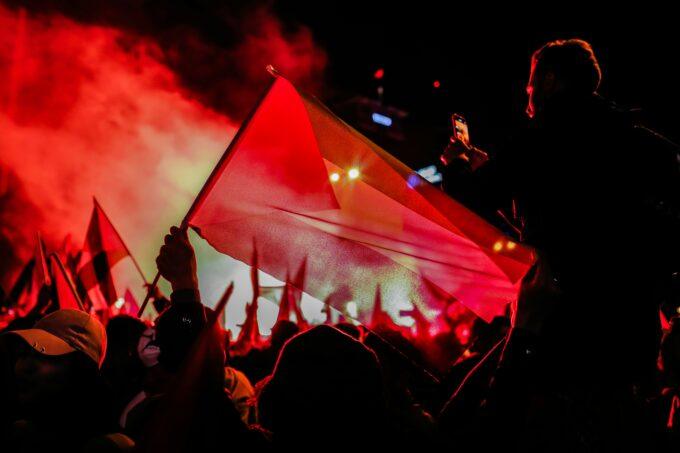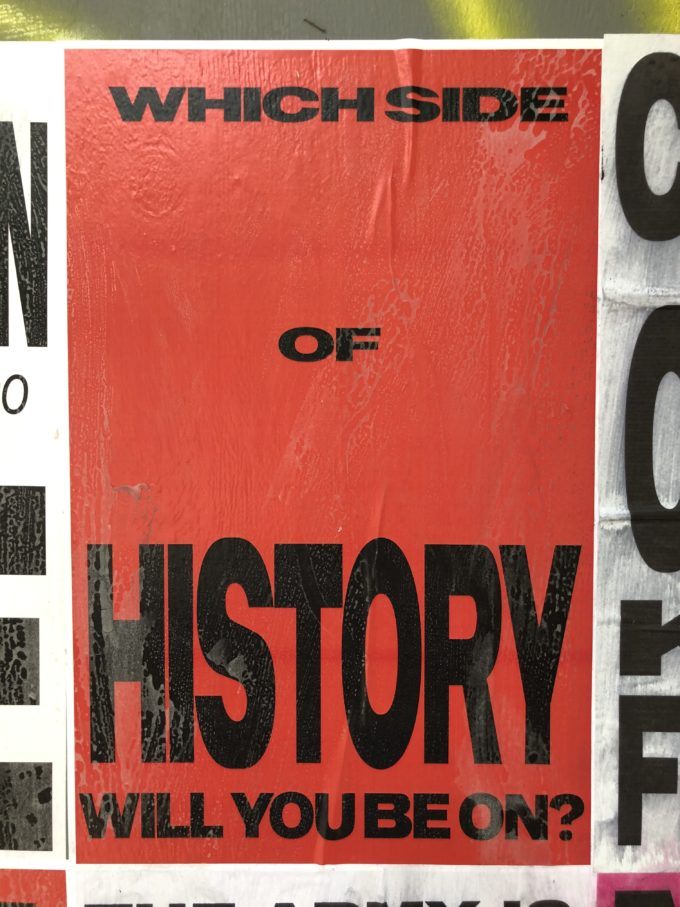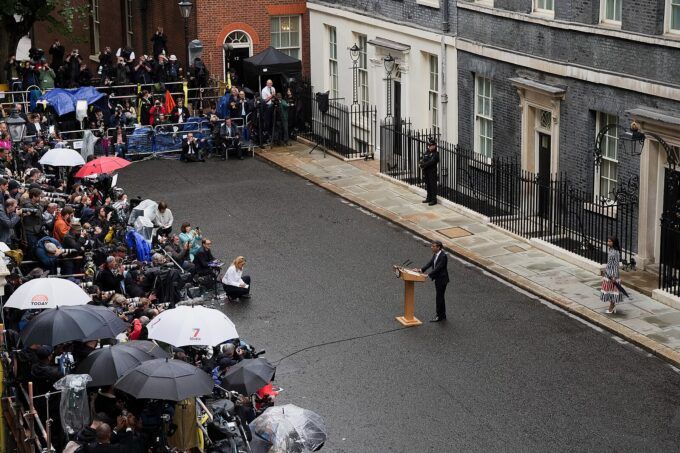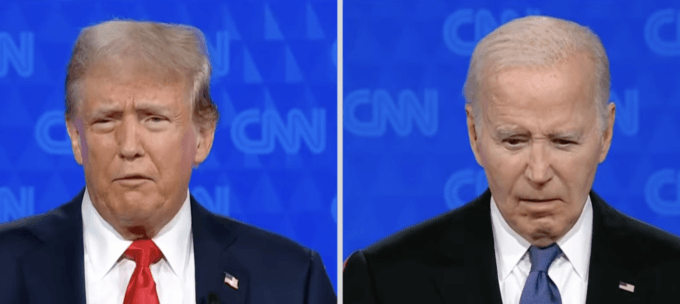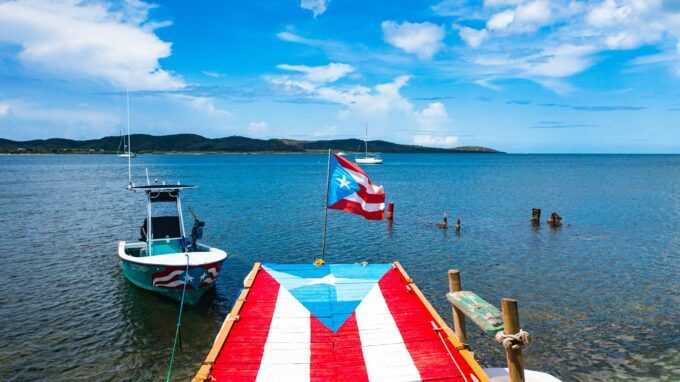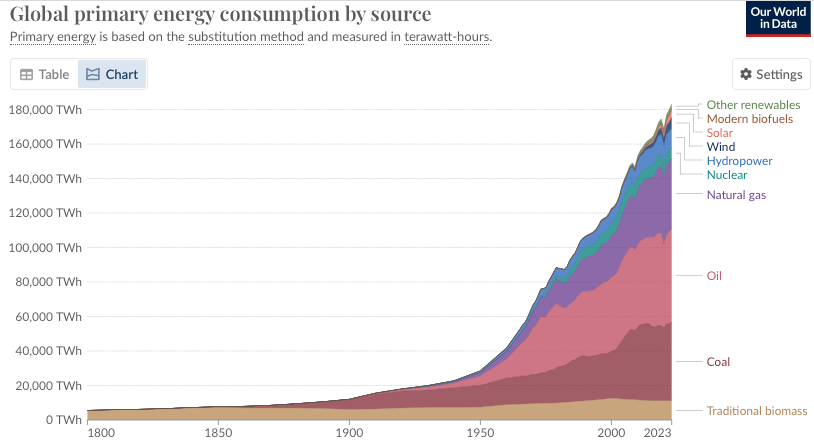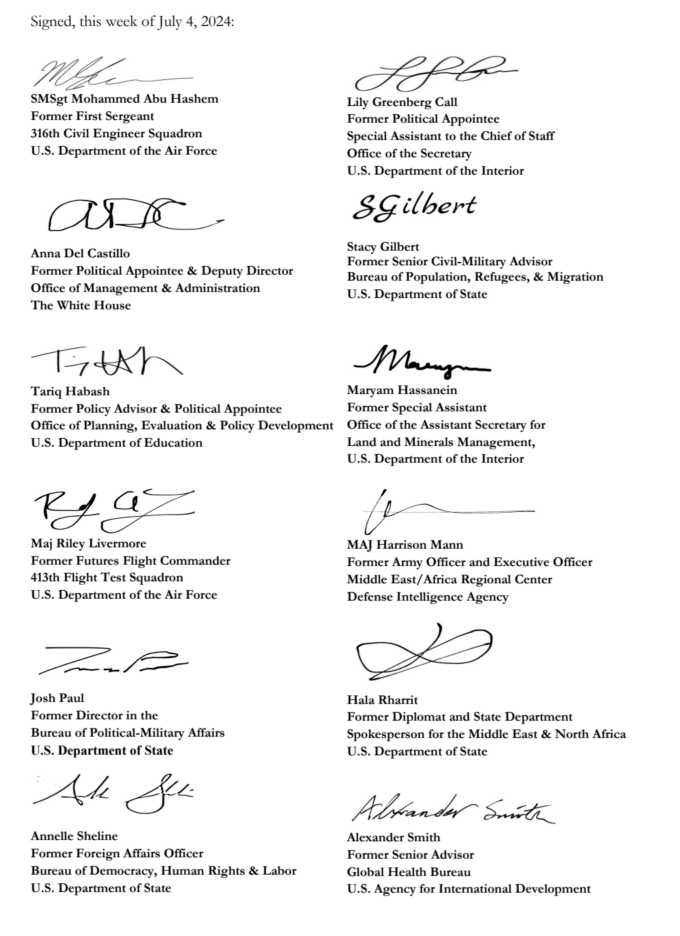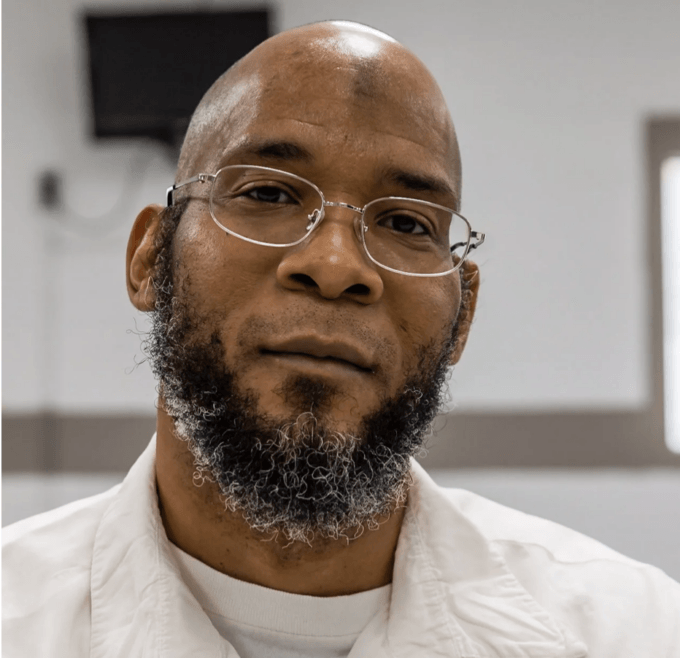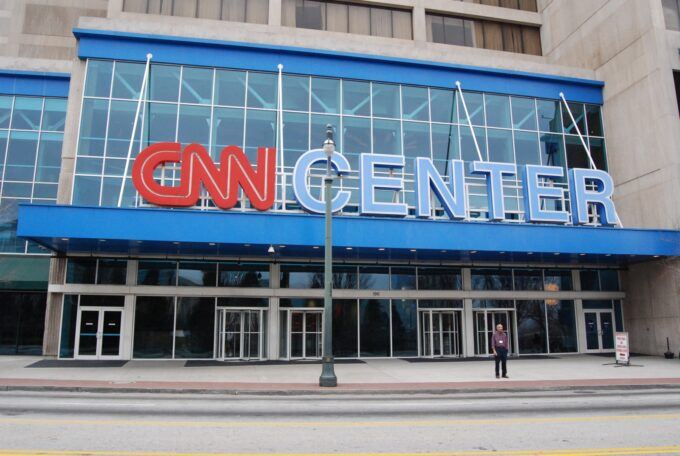
Nigel Farage has always been a bigoted posh boy with the gift of the gab. Raised in the rolling hills of Downe on the outskirts of London — a village most famous for its association with Charles Darwin — Farage attended Eden Park Preparatory School in the 1970s. His wealthy parents then paid for his attendance at one of South London’s most prestigious old boys’ clubs, Dulwich College. Farage’s germinal racism was public even at this early age, and in 1981, his fascist mannerisms were played down as ordinary “naughtiness” by his college’s “Master” when he chose to make him a prefect – a position Farage attained not because of his open racism but probably because of his sporting skills. (Farage happened to be part of the “three-man Dulwich team who in 1981 reached the finals of the national Schools Golf Championship in Surrey.”)
Among his many unusual schoolboy pranks, Farage took to signing his initials in the style of the neo-Nazi NF, seemingly reveling in the violence that the National Front had unleashed upon local ethnic minorities in neighboring Brixton in the wake of Enoch Powell’s “river of blood speech”. It is fitting that during his final weeks of sixth form (in 1982), Farage gained a new hero in the form of Enoch Powell, who had been invited to address Dulwich’s posh boys with his cultured racism. Farage would later recall that Powell’s visit had “dazzled me for once into awestruck silence”.
Schoolboy Farage was not isolated at the time, especially at Dulwich College. Throughout the 1970s London’s institutionally racist police force was relentlessly attacking black communities, famously leading up to the Brixton riots of April 1981. During these riots the local police had been granted permission to use the ample green spaces of Dulwich College’s grounds for one of their operational bases.
We should also remember that the main reason why the National Front grew in the first place was because the two leading parliamentary parties were themselves full of bigots. Both parties’ overriding concern (then as now) was quelling working class resistance to capitalist exploitation, not opposing oppression. The far right of the Tories leadership were busy organizing themselves within the Conservative Monday Club and willingly threw their political and financial muscle behind efforts to repatriate immigrants, while the Labour Party as ever, proved themselves more concerned with purging socialists from their ranks than in opposing the divisive lies of the Right.
But back then, ordinary members of the Labour Party were able to exert a moderating influence over the worst excesses of their Party’s pro-capitalist and racist leadership. One example of this can be seen by the party’s position on European integration. When Labour found themselves out of government (in the late 1970s and 1980s), its party leaders were forced to publicly oppose entry into the undemocratic bosses’ club that was the European Union. Given the dominance of right-wing Euroscepticism today, it needs to be understood that integration into the European Economic Community was fiercely opposed by the workers’ movement at the time, not on provincial grounds, but because of the disastrous role the EEC played in fostering a race to the bottom mindset on pay and conditions for working people. This socialist-inspired opposition to membership in the EEC even led Enoch Powell to endorse Labour’s manifesto commitments in a speech he delivered in Westminster in February 1982. However, Labour’s class-based position on the European project would soon be reversed under the leadership of Neil Kinnock, a disastrous u-turn which would help pave the way for the populists like Farage to seize the Eurosceptic terrain from the workers’ movement.
Trading in King and Country
When Farage left school in 1982, most of his chums progressed to graduate studies at either Oxford or Cambridge University. However, Farage took a different path. His desire to make it rich in Margaret Thatcher’s brave new world of deregulation and privatisation, Farage donned a pinstriped jacket and followed in his father’s footsteps became in becoming a commodities trader who made his living by swindling others. As luck would have it, a connection from the golfing world provided Farage with his first job opportunity and he landed on his feet when he joined Maclaine Watson, a traditional English commodities brokerage owned by the Wall Street giant Drexel Burnham Lambert. Later in the 80s, he moved on to R J Rouse & Co, which was acquired by the French bank Crédit Lyonnais. Farage was eventually sacked from this trader after “taking a drunken friend on to the floor” of the London Metal Exchange. After this inopportune event, Farage sought true independence and in 1994 he formed his own business, Farage Futures.
By the late 80s Farage had two children with his first wife, and ever the patriotic historian and political drinker, he also formed a social group called Farage’s Foragers which involved his organising alcohol fuelled trips with his macho friends to First World War battlefields in France and Flanders. One of his chums partaking in such boozy jaunts included Godfrey Bloom who would go on to win a seat for UKIP in 2004 in the European elections. Bloom’s causal sexism and bigotry eventually saw UKIP remove the whip from him in late 2013 (but not Bloom’s membership) partly as he was prone to speak his mind. Bloom famous referred to foreign countries in receipt of British aid as “Bongo Bongo Land” and demanded that the unemployed and public sector workers should not have the right to vote. Farage was quick to Bloom’s defence, saying that “he is not a racist, he’s not an extremist or any of those things and he’s not even anti-women, but he has a sort-of-rather old-fashioned territorial army sense of humour which does not translate very well in modern Britain.” Supporting the reasoning behind this line of defence, the Eurosceptic journalist Richard North has asserted that Farage himself, with whom he had worked closely within UKIP, “was racist in a Churchillian sense” as he “believed in the superiority of the white Englishman” – as North put it, Farage was “a white supremacist on a King and Country basis, rather than overt hatred of coloured people.”
But old-fashioned racism was always central to Farage’s life. In 1989 the city trader founded another social grouping called the Column Club which met monthly to drink and discuss Eurosceptic politics. And rather unsurprisingly “some members of Farage’s Column Club were on the extreme right of politics, sympathisers with or members of the British National Party.”
A Superstate Looms Large and an Independence Party is Born
Around roughly the same time that Farage’s unsavory Column Club were colluding, and his Forager’s were holidaying and slurping fine liquor, all hell broke loose politically speaking on a national and international plane. In November 1990 Margaret Thatcher was forced to resign as the Conservative’s leader because a mass movement of ordinary people — led by the Militant Tendency, a predecessor organisation of Socialist Alternative – had mounted a popular revolt against her hated poll tax. The following month the Berlin Wall was torn down, while soon after the USSR collapsed. With their old class enemies much diminished in strength and the Soviet bogey man now vanquished, conservatives of all stripes quickly had to recalibrate their propaganda to focus on a new external enemy. One new enemy thus came in the form of the European project. And as this political project was now fully embraced by the Labour Party, it served as a handy target for populist ire, alongside the Tories staple preference for immigration fearmongering.
One significant precursor for the building of this germinal movement against the EEC was the founding of the Bruges Group. The Bruges Club was a right wing thinktank launched in February 1989 by Lord Harris of High Cross (who at the time was a board member of Rupert Murdoch’s Times company) and Oxford University student Patrick Robertson, a former boarder at Dulwich College. The ignominious members of this group rapidly attracted more than a hundred backbench MPs and were soon joined by Margaret Thatcher herself, who became their honorary president just months after resigning as Prime Minister. Another intellectual godfather of the Bruges Group was Professor Norman Stone, a right wing stalwart at Oxford who had actively mentored Robertson and other Tories in their Euroscepticism. Much needed financial backing for this new think tank arrived courtesy of the billionaire Sir James Goldsmith. Robertson soon persuaded their new financier, who had always maintained a propensity for supporting far right intrigues, to launch his short-lived but highly effective Referendum Party in 1994.
However, the first political party to be formed in opposition to the EEC was Professor Alan Sked’s Anti-Federalist League (AFL) in 1991, which was shortly followed by the UK Independence Party (UKIP) in 1993. The AFL had stood in their first general election in 1992. Shortly after, Sked became enthralled by Farage at a meeting of the Bruges Group. Things moved quite slowly to start with, but when Sked stood in a by-election in May 1993, Farage was recruited to the canvassing team and was tasked with driving his hero Enoch Powell to a public meeting.
Powell’s connection to the AFL was temporary, and Sked sought other ways to popularise his new party, one of which was to adopt a catchier name, hence the party’s rebirth as UKIP. Farage quickly became the power behind the throne of this then generally poorly funded party, and in the wake of the 1994 European elections, UKIP faced fierce opposition when Sir James Goldsmith announced that he would be stumping up tens of millions of pounds to establish the Referendum Party, which as its name suggested called for a referendum on whether the UK would remain in the now named European Union (EU). Notably, by this time Goldsmith had already been elected to the European Parliament in France on a right wing ticket. The French right, then as today, always seemed one step ahead when it came to bashing immigrants and growing their forces.
Goldsmith’s Referendum Party, like UKIP, succeeded in many ways, but most of all it succeeded in attracting reactionaries and racists into its leadership. This was in keeping with the ultra-conservativism of its founder who had naturally employed many of his friends and employees in his undemocratic organisation. Thus the job of “field organiser” for the Referendum Party was delivered to Marc Gordon whose prior experience had consisted of acting as the Director of the London office of the International Freedom Foundation — a think-tank which served as a South African military intelligence front to shore up support for the apartheid regime. Bearing this in mind, socialist commentator Derek Wall made a valid point when he compares Goldsmith’s political activism to that of George Soros. Both appeared to follow a strategy which was to…
“…make mega-billions as a completely unproductive finance capitalist and then challenge capitalism. Like Soros, the Goldsmiths [Sir James and his brother Teddy] have done the work when it comes to ideas and politics: from the unsustainability of ever-increasing economic growth to the dangers of nuclear power, they have laid the intellectual groundwork for environmental campaigners, funded action and organised politically.
“Their politics, although a radical challenge to the conventional wisdom, have never been of the left. They are rightwing anti-capitalists in a far-from-self-interested way. Capitalism is hostile to the conservatism and functionalism they espouse.”
A Leadership of Cranks… Racist Cranks
Primarily by virtue of big money, the Referendum Party was able to dominate UKIP in the 1997 general election, obtaining 812,000 votes to UKIP’s 106,000. But when Goldsmith died of cancer in the same year, UKIP found greater possibilities for growth. This was especially so in the wake of New Labour’s 1999 introduction of proportional representation in European elections.
UKIP now set about popularising their anti-EU messaging in a way that differentiated themselves from their extreme right rivals, the British National Party (BNP), winning three MEP seats in the 1999 elections. This attempt at political segregation however never proved a particularly easy task to achieve in practice. A good example was provided in 1995 when Professor Sked recruited a student activist named Mark Deavin onto UKIP’s National Executive Committee. The naïve Professor had been wowed by the university student’s research skills, and Deavin had apparently never let on to his new friends that he was a BNP member. Thus Deavin was able to serve on UKIP’s leading body for two years before being kicked out, with his expulsion only arising when The Cook Report exposed his sinister secret in a documentary that aired on ITV shortly after the European elections.
In the coming years UKIP would have many electoral successes, but perhaps their greatest achievement lay in the fact that their mainstream political opponents chose to respond to their propaganda by largely accommodating themselves to UKIP’s populist priorities. Thus, particularly with the open embrace of neoliberal politics by so-called Social Democratic parties across the world, along with their active denigration of socialist ideas, far right talking points have now come to dominate the policies of most political parties. While political debate has certainly shifted to the right, these ideas have been actively resisted by masses of the population, even if not by the majority of parliamentarians. This can be seen by the immense popularity of the socialist policies that were promoted by even a moderate Social Democratic leader like Jeremy Corbyn, and in the reverse, by the immense hatred that was directed against Corbyn by all parts of the capitalist establishment.
In the case of the UK, the Labour Party’s ditching of the traditional politics of class struggle (most clearly seen in their failure to back the miners’ strike in the 80s) acted to create a political void that far right populists have now been able to fill. Therefore, unlike in the distant past (when the far right came to dominate Nazi Germany), UKIP’s primary concern has not been with crushing the workers movement, but instead with presenting themselves as an ordinary party that would be willing to fight to help ordinary people — as a respectable party quite unlike that of the Nazi-infected BNP. But for all their huffing and puffing about unwanted fascist infiltrators, UKIP’s pipedream of ideological purity was never going to be fulfilled, especially given that their political priorities have always meshed with those of so many reactionaries. This overlap was made harder to ignore by UKIP’s seeming perpetual love affair and willing embrace of former members of the far right, which involved their recruiting one-time leaders of the New Britain Party into their governing structures — an odious group which advocated the voluntary repatriation of immigrants.
Notable far right activists who were recruited into UKIP’s upper echelons included Michael Nattrass and Bryan Smalley, former NEC members of the New Britain Party who went on to serve respectively as UKIP’s national chair between 2000 and 2002 and as UKIP’s Secretary in 2000. Another important joiner around this time was Jeffrey Titford who spent a short time with the New Britain Party when the Referendum Party had folded, before going on to join UKIP, a party which Titford led from 2000 to 2002. Likewise, the example of Martyn Heale provides another revealing case. In the late 1970s Heale had served as a London branch organiser for the National Front, later becoming the chair of the West London branch of the New Britain Party. In 2003 Heale then became the chair of UKIP’s Thanet South branch. In fact, in 2015 when Farage stood in this parliamentary seat, Heale was still serving as the Thanet South branch chair!
A further illustrative demonstration of UKIP’s unprincipled relationship to the BNP milieu can be seen by the party’s flagrant mismanagement of their relations with one of their rank-and-file members, an activist named Trevor Agnew. In 1999, Agnew had been expelled from UKIP while standing in a local election because it was found out that he had ties to the BNP. But for reasons unknown he was subsequently allowed to rejoinUKIP. Then in 2003 he was expelled (again) for campaigning in support of both the BNP and UKIP – with the latter being the party he was standing for. Further internal investigations (undertaken in 2003) led UKIP’s bosses to conclude that a leading UKIP activist in the same region, a man named Peter Troy, was the underlying cause of the problem as he had been deliberately actively recruiting BNP supporters into UKIP and even paying their membership fees for them. Yet despite this finding, the following year during the 2004 European elections Troy was selected to stand at the top of UKIP’s list in Scotland.
As if that was not enough, UKIP has even more controversial cases on their books. A prime example here is provided by Alastair Harper, whose long and highly visible career had been committed to spreading neo-Nazi hate. For example, Harper had not only cofounded the fascist Northern League in 1957, but in 1990 had been spotted attending a secretive fascist conference in London which was attended by the likes of Robert Steukers, a leading figure of the Belgian extreme right. Harper was then somehow allowed to join UKIP and stand as their candidate in Dunfermline West, after which, in a fairly natural progression, he went on to become the BNP’s assistant organiser in Fife.
Another related case is Alistair McConnachie, who had been UKIP’s organiser in Scotland at the same time as Harper. McConnachie’s was famously “suspended from [UKIP’s] National Executive Committee for a year in February 2001 after he questioned the extent of the Holocaust.” As McConnachie wrote at the time: “I don’t accept that gas chambers were used to execute Jews for the simple fact there is no direct physical evidence to show that such gas chambers ever existed.” And to top off all these troubling tales of extremism, one of the coauthors of UKIP’s 2001 manifesto, a man named Dr Aidan Rankin, was part of a far-right group called Third Way – itself a spinoff from the National Front.
A Fleeting Racist TV Star
Evidently UKIP has never been too picky about weeding out reactionaries when it comes to political representatives. Quite the opposite. In 2004, the controversial day-time television presenter Robert Kilroy-Silk was headhunted to join UKIP’s ranks, shortly that is after he had been sacked from the BBC for promoting racism in his newspaper column. But the BBC had hardly been principled in dispensing of their famed host, as Kilroy-Silk had proudly exhibited his journalistic bigotry for years. For example, in 1991 he wrote in the Daily Express that: “They [Muslims] are backward and evil and if it is racist to say so… then racist I must be – and happy and proud, to be so”. In 2002, writing in the Sunday Express he said: “The indigenous population is not responsible. The diseases [like HIV] are being brought here by refugees, immigrants and tourists… It is the foreigners that we have to focus on.”
Another horrific gem (and there are too many to discuss) was penned by Kilroy-Silk in 2002, when, again in the pages of the Daily Express, he told his readers how he would solve unwanted immigration. “We station paratroopers a mile from the British end of the [Channel] Tunnel… The paras herd the immigrants together and cart them off to Dover where they are dumped on a secure slow boat to – wherever.” In the end, the newspaper article that led to his sacking was no worse than any of his normal fare – the only difference being that the BBC felt compelled to enforce a new rule that they had introduced which banned their employees from publishing racist diatribes in freelance columns.
The BBC’s loss became UKIP’s gain, and Farage and friends seized upon the chance to stand a well-known and outspoken racist as their headlining candidate in the 2004 European elections – which coincidentally happened to be the first election in which curbing immigration was foregrounded in UKIP’s campaigning literature. With UKIP’s populist profile on the rise, Kilroy-Silk was duly elected (along with 11 other MEPs), but when the television star realised that he couldn’t wrest complete control of UKIP from Farage and company, the celebrity bigot stormed off to form his own short-lived political party.
Preparing the Streets for Rivers of Blood
After the 2004 European elections Farage’s ties to the Europe’s ever growing far right became more openly pronounced, especially when he became the joint president of the new Independence/Democracy group of populists. UKIP profited enormously from the EU bureaucracy, mainly by forming a group with some of Europe’s leading anti-Semites. At the same time, and much closer to home, fresh controversies of racism soon made the press. David Abbott who had joined UKIP’s NEC in 2006 featured in a Daily Telegraph reportthat pointed out that he had given donations to the American Friends of BNP and had met with the BNP leader Nick Griffin at a meeting organised by the white supremacist group American Renaissance. As it turned out UKIP already knew about these issues, as they had first been raised in the British press in 2004 when Abbott had stood as one of their parliamentary candidates. But despite this seeming problem, UKIP had ignored his indiscretions and brought him on to their NEC.
All this was happening with New Labour in power, at a time when Tony Blair was doing his damnedest to misdirect working class anger away from the ruling class. Throwing fuel on UKIP’s fearmongering, a then so-called moderate set about promoting the idea that Britain faced a crisis in multiculturalism. This individual was Trevor Phillips, who in 2005, while serving as the chairman of the Commission for Equalities and Human Rights, channelled Enoch Powell when he warned of an “increasing ‘race segregation’ which would bring ‘civil strife’ and ‘fire’ to the streets of British society.” Contributing towards a developing climate of racism, things only got worse in 2008 when the BBC broadcast a television series entitled ‘White Season’ which focused on the marginalisation of the white working class. The “Rivers of Blood” episode in particular was well received by the BNP leader Nick Griffin who said if he had the chance to make a documentary on Powell “it wouldn’t have differed too much from this”.
With the political mainstream moving ever rightwards, UKIP were further emboldened to intensify their hate. Farage was working hard to court far right audiences; in December 2009, he gave his first interview to America’s leading libertarian conspiracist, Alex Jones. As was his wont, Farage used this interview to rail the formation of a one world government and against what he said was a “very, very questionable concept of global warming caused by C02 emissions.”
Ever the reactionary networker, in 2012 Farage developed a friendship with the dark darling of the American far right, Steve Bannon – a former banker with Goldman Sachs who cofounded Breitbart News in 2007. A few years after their first meeting, Bannon launched a London base for Breitbart, which was established (in 2014) by James Delingpole and Raheem Kassam. The latter individual remains the most relevant to Farage’s story, as in the same year that Kassam started working with Breitbart he was appointed as Farage’s “chief of staff” – a position he held until late 2015. With strong ambitions for assuming UKIP’s reins of power, Kassam, while remaining close to Farage, continued working for Bannon, who at the time was in the process of overseeing Donald Trump’s Presidential victory. The far right was now really in business, and shortly after Trump’s victory, Farage accompanied by Kassam, had flown to America to further consolidate Farage’s special relationship with the new orange leader of the free world.
Kassam would famously feature in The Brink, a fly-on-the-wall documentary about Bannon’s attempts (with the aid of Kassam and Farage) to build a far-right group called “The Movement.” In the documentary we see the exact moment (in October 2017) when Bannon, sitting across a table from Farage, said he wanted to work together with him to “knit together the populist nationalist movement throughout the world,” with the ideal of it becoming a “convening authority” for the far right. Farage eagerly agreed with Bannon’s proposal, even if he expressed concerns that he was already pressed for time.
Here it seems that one reason why Farage was already very busy was because UKIP’s leadership was in turmoil, with many of the party’s top dogs believing that their party should take an even harder line on Muslims. One example of this was a proposal that UKIP could achieve this aim by working more closely with Tommy Robinson, the high-profile former leader of the street-fighting English Defence League. Indeed, in June 2018 Kassam had even managed to position himself at the forefront of a 10,000-people strong “Free Tommy” demonstration in London. At this time Kassam then used his authority to promote “The Movement,” saying it had the potential to include UKIP in efforts to “unite what we think of as patriotic, populist nationalist parties across the continent”. But by this stage it seems that Farage was not happy about UKIP’s slightly altered political trajectory under Gerald Batten’s new leadership. Apparently, Farage thought UKIP was putting too much emphasis on fighting the so-called evil of Islam rather than concentrating on the bread-and-butter issue of getting Brexit done — a priority that was seemingly consolidated in Farage’s eyes when Batten had appointed Robinson as his personal adviser on “rape gangs and prison conditions and prison reform.” It is, on the other hand, also possible that Farage was annoyed that his own media profile might get sidelined as new political developments strayed beyond his immediate control. Either way, another leading UKIPPer who disagreed with Batten was Catherine Blaiklock, the party’s new spokesperson on economics. This led Farage to work closely with her to secretly plan the formation of a new political party, The Brexit Party — a party which was officially launched by Farage to everyone’s surprise (including that of Blaiklock) in January 2019.
Taking Back Control, and the ‘Marxist’ Enemy Within
Fed up with a nominally democratic membership, which had the potential to shape UKIP as an organisation, The Brexit Party was created as a new beast. Farage had seemingly taken inspiration from the lack of democratic structures exhibited by the Referendum Party and ensured that his new party would remain fully in his personal control. Instead of members The Brexit Party would have registered supporters. But even with such safeguards in place, no sooner had his party been launched then it became clear that the Party’s other cofounders had to be dismissed to save the party. The first to go was the main organiser behind The Brexit Party, Blaiklock, who despite howling that she had previously been married to a Nepalese gentleman and was then happily married to a Jamaican, was correctly exposed in the media as being a racist.
Indicative of Blaiklock’s reactionary views, the Brexit Party’s cofounder had retweeted a number of posts made by Tommy Robinson, but more damming were the forty-five messages she had retweeted from the former BNP activist, Mark Collett (now the leader of the ethnonationalist Patriotic Alternative). One of these retweets from 2018 showed a picture of a multiracial primary school class with the caption: “This is a British school. This is white genocide.” (These retweets had evidently been made from Blaiklock’s old twitter account — an account that had been recently deleted to help hide her racist views from the world.)
Then, just weeks after Blaiklock’s dismissal, Farage’s friend, Michael McGough, who had been anointed treasurer of The Brexit Party, was ditched for similar reasons. Apparently, McGough was of the old school type that Farage tended to be acquainted with, the type that talked about “bingo bongo land”, and thought it was fair game to promote anti-Semitism. In referring to the Labour Party’s Miliband brothers, who are Jewish, McGough had stated that they had “shallow UK roots”. He then made similar comments about Peter Mandelson – whose father was Jewish – saying that he was likewise “devoid of UK roots”.
Of course, these high-profile dismissals did nothing to combat racist attitudes within Farage’s new party. The firings simply helped Farage pretend to the public that he wasn’t really a creature of the far right, which he most certainly was. I make this point here because Farage was promoting the same types of toxic conspiratorial nonsense as his disgraced cofounders, and doing so in media outlets that were far more visible. In an May 2018 interview conducted by Tucker Carlson that aired on Fox News – Carlson himself being a leading booster of the Great Replacement conspiracy, the racist fiction that non-white people are being brought into countries to replace white indigenous voters – Farage promoted his dog whistle politics stating:
“George Soros’ Open Society Foundation, which he has of course poured billions of dollars into, I mean this is the biggest political campaigning organisation in the world. He wants to break down the fundamental values of our society and, in the case of Europe, he doesn’t want Europe to be based on Christianity.”
The following month Farage was once again interviewed on Fox News, but in a discussion that centred upon Hungary’s “STOP Soros package of bills,” which in the words of Victor Orban’s far right government were being introduced “to stop Hungary becoming a country of immigrants.” Farage knew full well that Orban was mounting an anti-Semitic campaign that centred on Soros himself, but Farage still chose to respond to his interviewer like this.
“What Soros has done is that he is actually encouraging people to come across the Mediterranean, to flood Europe… This is an organised attempt, on a huge scale, to undermine nation states, to undermine democracy, and to fundamentally change the makeup, demographically, of the whole of the European continent, and thank goodness that Viktor Orban and Hungary has got the courage to stand up against him. But I tell you something, if you criticise Soros, his media friends accuse you of being an anti-Semite. It is quite extraordinary, and I really feel that Soros in many ways is the biggest danger to the entire Western world.”
Leaving aside Farage’s hypocrisy, there can be no doubting that his scapegoating rhetoric, in lieu of their being any other sensible socialist alternative being promoted in the mainstream, was going down well with the public. This became more evident in May 2019 when The Brexit Party took a massive 29 of the possible 73 seats up for grabs in the European elections, obtaining 30.5 per cent of the total votes cast. Keen to make the most of this success, Farage then tried to persuade his new batch of MEPs to join the freshly launched Identity and Democracy grouping – a group which included both Marine Le Pen’s Rassemblement National (National Rally) and Germany’s far right counterpart Alternative für Deutschland (AfD). Yet despite his best efforts, Farage remained unable to bully his parliamentarians into his attempt to jump into bed with two of Europe’s most notorious far right parties.
In January 2020 Brexit was completed and the UK was formerly separated from the European Union. The following January, Farage’s party was renamed Reform UK. Within a few months Farage handed over formal leadership of the party to Richard Tice, and Farage became Reform’s honorary president, which meant he could devote his time to building the so-called popular revolt and propagandising against the pandemic lockdowns. His role as a mouthpiece for the far right had been aided by his hosting a talk radio show on LBC from 2017 through to June 2020. But in mid-2021 Farage was then able to intensify his propaganda war as the host of a new Sunday morning show on GB News (UK’s new equivalent to Fox News).
Full of bilious hot air as ever, in August 2020 Farage made his regular pilgrimage to the Conservative Political Action Conference – a political gathering of the international far right – where once again he upped his fearmongering game. During the speech Farage delivered we see the real Farage when he warned:
“We are under attack as never before, and that threat is not external… The biggest threat we face is from within. The biggest threat we face is the fifth column inside all of our countries which is attempting to destroy the family unit, attempting to destroy our Judeo-Christian culture, attempting to destroy our Constitution, attempting to destroy our history, our pride in who we are and what we are, and the way they are doing it, the waying they’re doing it is predominantly through the educational institutions… Our children are being indoctrinated. Our universities have become madrassas of Marxism and it’s got to change… and the same goes for the media… This is not accidental. What is going on, and it is happening in the US, it is happening in Canada, it’s happening in the UK, and it’s happening in Australia, it is happening in New Zealand. It is the English-speaking countries that have got this terrible virus worse than anywhere else in the world. This is a Marxist attempt to break Western civilisation. A Marxist attempt to destroy everything that we are, and we are going to fight back hard against it.”
This is far right conspiracy mongering to the core, a line of attack which frames “cultural Marxism” as an evil plot to disenfranchise ordinary people, with this fictious Marxist takeover being portrayed as a dastardly virus, which as Farage stated, was not even being opposed by conservatives. This is why he ended his speech with a rallying cry for the far right “foot soldiers” of the world “to stand up against the establishment, to stand up against the deep state, and to stand up against all these things the globalists try to impose upon us.”
2024 and the Rise of Reform
In late May when the UK’s weak and faltering Conservative government presented the public with an early general election to be held on July 4, initially it wasn’t clear what role Farage would play. All we did know is that his input to the election would be divisive. This was more than evident when Farage lined up an interview on Sky New’s with Trevor Phillips (on May 26), where he made it absolutely clear that a political priority for Reform UK would involve a vicious scapegoating of Muslims. Shortly after this, on June 3, Farage then announced he was now Reform’s leader, surprising many when he stated that he was planning to stand in the parliamentary seat of Clacton.
But before Farage’s surprise announcement, Reform already had a parliamentary candidate for Clacton, a man named Tony Mack, whom was unceremoniously and undemocratically swept aside. This caused much annoyance to Mack, who then ditched Reform so he could stand against Farage as an independent. Mack was no angel. Much like Farage himself, Mack is a racist who vehemently denies being a racist, with most of his misinformed hate directed against Muslims. For example, on March 6 Mack tweeted that Islam is “basically an evil mysoginistic oppressive [sic] ideology opposed to everything I hold dear” while shortly after being replaced by Farage he made it a political priority to retweet a post made by Tommy Robinson (also someone who is apparently not a racist).
During Farage’s grandstanding electioneering in Clacton, Reform attracted unwanted attention when a Channel 4 reporter made an undercover film which exposed extremely racist remarks made by Reform campaigners. Most of the subsequent coverage of this matter then focused on the bigoted comments made by a single campaign volunteer (Andrew Parker), which were disregarded by Farage who alleged (with little pushback) that the individual had been an actor and so the damming footage must have been manufactured as some form of elaborate psi-op (as Farage put it, “a total and utter set-up”). Yet the subsequent focus on this volunteer missed the point completely, as another more significant person who featured in the footage was George Jones, who was introduced as being “a veteran” of UKIP and The Brexit Party who was “running events for Farage.”
Although Jones is no longer working for Reform, in the covertly recorded footage he asserted that Farage had chosen Clacton to stand because it “was proper England… proper English… not like in London when you’re a foreigner in your own country.” And later, while drinking outside a pub, Jones identifies a Pride flag on a passing police car and comments: “You see that fucking degenerate flag on the front bonnet? What are the old bill doing promoting that crap? They should be out catching nonces not promoting the fuckers.” Jones is then captured boasting that under Reform’s leadership “our police officers will be paramilitaries, they won’t be police” before ominously adding that “we’re going to bring back the noose”.
The plain bigotry of those involved with Reform, as illustrated by the reactionary views presented by Tony Mack, Andrew Parker, and George Jones, remain typical for many of the leading members of Farage’s party. Indeed, we could look at just a few of Reform’s parliamentary candidates who were subsequently dropped when their toxic political views were exposed to public scrutiny. (They were however ditched too late for their names to be removed from the ballot papers as Reform candidates.) Such individuals include former BNP member Raymond Saint, who was chosen to be Reform’s candidate in Basingstoke; Grant StClair-Armstrong, their candidate in North West Essex, who had previously written a blog post calling for people to “vote BNP”; and Leslie Lilley, Reform’s candidate for Southend East and Rochford. The latter candidate penned a social media post in response to the news of a small boat arriving in Dover which said: “I hope I’m near one of the scumbags one day I won’t run away I’ll slaughter them then have their family taken out”.
Another Reform candidate who was dropped because of his extreme views was an elderly bigot named Hugo Miller. Yet not only was Miller selected to be Reform’s parliamentary candidate for Horsham – but he had longstanding ties to Farage’s crew, as he had stood as UKIP’s parliamentary candidate in the same seat in 1997, 2001 and 2005. Just one example of Miller’s troubling views was illustrated by a Facebook post he wrote in 2020 which highlighted his thoughts on the history of racism in America. Miller observed: “As slaves, they [African Americans] fitted in well, but as equals – well, that was asking too much.” In the same post he added: “I believe that the Negroes in America are very fortunate indeed, in that the White population has (eventually) allowed them to fully integrate into society…”
Farage’s Victory: Before the Storm
Independence Day has come and gone, and with the July 4th election now over, Labour has won by a landslide. This hollow victory however has nothing to do with Labour’s popularity, but the total collapse of support for the Conservative Party, who obtained their “worst-ever result” with 7 million votes, while Labour, even with their landslide, failed to breach the 10 million mark. It was therefore not Labour but Reform who were the main beneficiaries of the Conservative’s implosion. Reform totted up a massive 4 million votes, which represents Farage’s highest ever electoral vote – a huge vote, which is not reflected in parliamentary positions owing to the undemocratic nature of the first past-the-post electoral system. Hence despite this success Reform only secured five parliamentary seats. But bums in parliament is not all that matters in politics, as one of the main achievements of Farage’s decades of electioneering has been his ability to drag the political priorities of all the mainstream parties to the far right.
We should also remember that UKIP had previously gained a similar sized vote in 2015, when they received just short of 4 million votes. But by 2019, with Brexit largely done, and with the Tories lurching ever further to the right, the vote for Farage’s newly christened electoral vehicle (The Brexit Party) plummeted to twenty-odd thousand votes. This makes Reform’s current results all the more remarkable.
Also significant is that Labour won this year’s general election with a vote count that was 3 million short of the 13 million votes obtained under Jeremy Corbyn’s socialist leadership in 2017. Moreover, even in 2019, Corbyn’s Labour still gained more votes than Starmer! Again this was a remarkable achievement on Corbyn’s part given that the then right wing dominated parliamentary Labour Party (with Sir Keir Starmer to the fore) were doing everything in their power to stop their own party winning. But if we were to believe Starmer and his capitalist cronies, they had to drop all of Corbyn’s socialist policy commitments because they were so unpopular with the public. Nothing could be further from the truth. This is reflected by the fact that Corbyn was forced to stand as an “independent” and still beat Labour; it was also evident by the declining support for Starmer himself who saw his personal vote drop from 36,641 in 2019 to 18,884 this year.
The danger that lies ahead is that with the ongoing decline of the Conservative Party (a potentially terminal process), and if Labour fails to take immediate measures to better the lot of the electorate, it is Reform that is best positioned to mount a serious challenge for political power. Judging by the Tory-lite content of Labour’s election manifesto, Starmer’s Labour are not going to suddenly start promoting the sort of the socialist changes that are needed to address the multiple crises facing the working class. There was a good reason why one of the Labour Party’s main funders, Unite the union, refused to endorse Labour’s election manifesto. It is also why in the weeks before the election the same union argued:
“Labour need to make government count. They can and need to make real change. The rise of the far right throughout the west should send alarm bells ringing in Westminster. People want to see tangible results and politicians must listen to workers and communities.”
Yes, alarm bells should have been ringing loudly, but unfortunately they have not been. This is because the few bell ringers who might have existed before the election have now been silenced: Labour’s purge of even moderate socialists (like Corbyn) is now largely completed, their overwhelming priority seems to be assuringthe leaders of the billionaire-class that they will be prioritising them over the needs of voters.
Ironically, Labour could learn a thing or two (but won’t) from Douglas Carswell, the former Conservative Party MP for Clacton who defected to UKIP in August 2014, then becoming UKIP’s first elected MP when he triggered a by-election later that year. Carswell subsequently ditched UKIP in 2017 and later resigned from parliamentary politics to pursue more intellectual pursuits. So, in the first instance, just a few weeks after quitting UKIP he published a book entitled Rebel: How to Overthrow an Emerging Oligarchy. And while Carswell’s hard right politics dictate that his preferred rebellion is very different to what might be proposed by a socialist, his book still makes a few interesting, if perhaps obvious, observations. “A mood of populist revolt is taking hold. Across Britain, the United States and much of Europe, a new radicalism is on the rise,” he explains. There is “an intense, simmering feeling of frustration” amongst voters — an “insurgent anger” being “aimed at what they perceive to be the political clique – that cosy knot of professional politicians and pundits who get to decide where the boundaries of the politically possible lie.” He goes on:
“So, they cheer when candidates like Trump or Farage come along and say things beyond those boundaries. They do so, not necessarily because they want to shift the boundaries, or, indeed, because they agree with what is being said, but because they so deeply resent the way that the political cliques – elites – have patronized them and treated them with such disdain.”
This is true. But like other libertarian commentators, Carswell’s ultimate solution is to dream of creating a purer form of capitalism, one unencumbered by government regulation. So when it comes to dealing with growing inequality, he understands that it is increasing but believes that it is wrong to assert that the growing gap between ordinary people and “the emergence of a class of super-remunerated corporate ‘fat cats’… is a natural consequence of capitalism.” Instead, he insists capitalism has just “been corrupted”. “What we need to do,” he proposes, “is not further restrict the free market, but sweep away the corporatist constraints that vested interests have imposed upon it.” This however is just another delusional libertarian dream.
But what we do know is that at the time of publishing Rebel, Carswell had clearly become frustrated with his fellow patriots on the right, noting that many of their movements were little more than “personality cults” “led by charlatans.” He railed against the “pound-shop populism of Nigel Farage or Donald Trump” and argued that such leaders should engage in less fearmongering and instead take his advice and adopt a more positive program that would allow capitalism to work its magic.
Rebuilding the Left. We Need a Party of Struggle
Carswell, Farage and Trump all understand what Starmer does not: “From the US Democrats, to UK’s Labour, to the French Socialists, everywhere the left seems to be in trouble as their vote slips away from them,” as Carswell puts it. This can be seen with the almost certain return to power of Trump, and the huge gains that have been made by the far right in France. In the UK, Labour may have won, but it was a victory based on a dwindling vote. Carswell like other right populists fails to recognise the most basic fact explaining why so-called ‘Left’ politicians are seeing their votes slip away, which is that their policies no longer even pretend to prioritise the welfare of the majority of their electorate.
It is not just that the so-called ‘Left’ politicians are elitist and patronising, it is that they have totally ditched any semblance of socialism. In the US this has never been different, as there has never been a party that represents the working class. And while in the UK the Labour Party has always supported capitalism to some extent, the difference was that until the 1980s, it was still a party that was forced to listen and respond to the political views of its working class members. This limited form of interaction ended with Neil Kinnock’s leadership, but then had a partial but insufficient reversal when Jeremy Corbyn led the party.
In his 2017 book, Rebel, Carswell makes one other straightforward point when he states: “Perhaps the most important reform we could introduce to break the stranglehold of the parties on politics is a proper right of recall.” And yes, socialist agree that the public should have the right to recall their elected representatives, as it is a critical means of holding them democratically accountable. But Carswell, as the quote makes clear, isn’t too keen on political party’s full stop. In keeping with his libertarianism, he believes the problems facing politics cannot be solved by creating a new party, but “It’s to do politics without one.” Socialists disagree, and we believe it is essential that our class has politicians who represent their interests on the streets and in parliament.
This means the task at hand will involve us creating political parties afresh, all over the world – creating parties that are democratic, and that promote the type of transformative politics that can realistically meet the living needs of ordinary working-class people. Such parties will need to be living breathing organisations of struggle, that work alongside militant trade unions and their members to engage in a bold socialist fight to take the wealth and big companies out of the hands of the billionaires.
These parties must be committed to creating secure jobs that pay a real living wage, they must be committed to launching a mass council house building program to provide high quality affordable housing for all, and committed to building the types of mass movements that can shut down the capitalist war machine. There are many more far-reaching and inspiring policies that we need to fight for, but another significant socialist one is to fight to nationalise the banks and the big corporate monopolies so that they are brought under democratic workers’ control and management. Only if we take such bold approach to fighting capitalist exploitation the world over will we, the global working class, be able to undercut the support of scapegoating far right populist elites, whether they be Reform UK in the UK or the National Rally in France.
The post Racism in the Life of Farage: From Enoch Powell to Reform UK appeared first on CounterPunch.org.
This post was originally published on CounterPunch.org.




 Reich.” The legislation submitted to the German Reichstag (parliament) on March 23, 1933, enabled Hitler and his cabinet to 1) make laws without participation of the Reichstag; 2) enact measures that violated the German constitution; 3) implement new laws immediately; 4) allow the government to make foreign treaties
Reich.” The legislation submitted to the German Reichstag (parliament) on March 23, 1933, enabled Hitler and his cabinet to 1) make laws without participation of the Reichstag; 2) enact measures that violated the German constitution; 3) implement new laws immediately; 4) allow the government to make foreign treaties 
